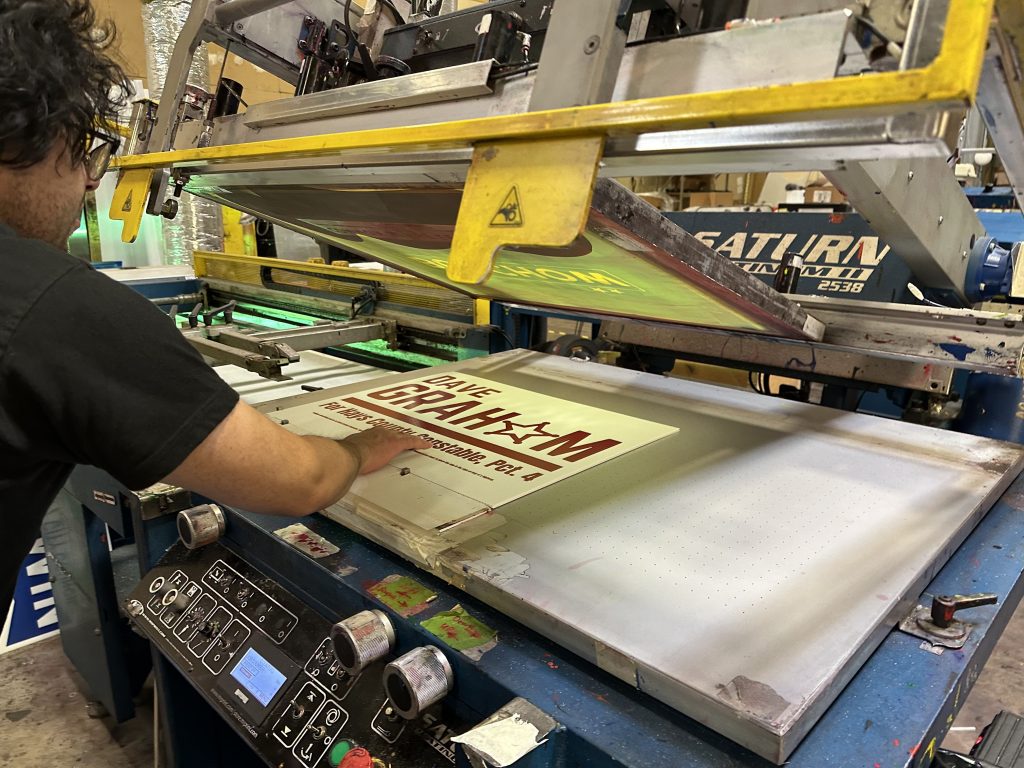
Table of Contents
- Introduction
- Materials Used in Yard Signs
- Designing the Yard Sign
- Printing Techniques
- Cutting and Shaping the Signs
- Adding Stakes and Frames
- Finishing Touches
- Conclusion
Introduction
Yard signs are a versatile and popular method for advertising and communicating messages in various contexts, from political campaigns and real estate listings to event announcements and business promotions. Understanding how yard signs are made can help you appreciate the craftsmanship involved and guide you in making informed decisions when purchasing or designing your own. This blog post delves into the step-by-step process of creating yard signs, from selecting materials to the finishing touches.
Materials Used in Yard Signs
Corrugated Plastic
Corrugated plastic, also known as Coroplast, is one of the most common materials used for yard signs. It is lightweight, durable, and weather-resistant, making it ideal for outdoor use. The fluted design allows for easy insertion of stakes, which secure the sign in the ground.
Aluminum
Aluminum yard signs are known for their longevity and professional appearance. They are rust-proof and can withstand harsh weather conditions. These signs are typically used for more permanent installations or in situations where a high-end look is desired.
PVC
PVC signs offer a blend of durability and affordability. They are rigid, weather-resistant, and can be easily printed with high-quality graphics. PVC is often used for both indoor and outdoor signage, providing a solid, professional look.
Designing the Yard Sign
Graphic Design Software
The first step in creating a yard sign is designing it using graphic design software such as Adobe Illustrator, Photoshop, or Canva. These programs allow designers to create precise, scalable graphics that can be easily transferred to the printing process.
Choosing Colors and Fonts
Colors and fonts are crucial elements of a yard sign’s design. Bright, contrasting colors can help the sign stand out, while readable fonts ensure the message is conveyed clearly. It’s important to choose colors and fonts that align with the brand or message being promoted.
Incorporating Logos and Images
Logos and images add visual interest and can enhance brand recognition. High-resolution images and vector graphics are preferred to ensure clarity and quality in the final printed sign. Designers should also consider the placement and size of these elements to maintain balance and readability.
Printing Techniques
Screen Printing
Screen printing is a traditional method used for producing yard signs. It involves creating a stencil (or screen) and using it to apply layers of ink onto the sign material. This technique is cost-effective for large runs and produces vibrant, durable prints.
Digital Printing
Digital printing has become increasingly popular due to its flexibility and high-quality output. This method uses large-format inkjet or laser printers to apply the design directly onto the sign material. Digital printing is ideal for small to medium runs and allows for more complex and detailed designs.
Cutting and Shaping the Signs
Die Cutting
Die cutting is a process where a machine cuts the sign material into specific shapes using a pre-made die. This technique is efficient for producing signs with unique shapes or rounded edges and is commonly used for large production runs.
CNC Cutting
Computer Numerical Control (CNC) cutting uses computerized machinery to precisely cut sign materials into any desired shape. CNC cutting is highly accurate and can handle intricate designs, making it a popular choice for custom yard signs.
Adding Stakes and Frames
H-Stakes or Wire Stakes
H-stakes or Wire Stakes are metal stakes shaped like an “H” that insert into the flutes of corrugated plastic signs. They provide a simple and effective way to display yard signs on lawns. H-stakes are easy to install and remove, making them ideal for temporary signage.
Metal Frames
Metal frames offer a more robust and permanent solution for displaying yard signs. They are typically made from steel or aluminum and can hold heavier signs. Metal frames are often used for real estate signs and other long-term outdoor displays.
Finishing Touches
Lamination
Lamination involves applying a clear protective layer over the sign to enhance its durability and weather resistance. This process can also give the sign a glossy or matte finish, depending on the desired look.
UV Coating
UV coating is another protective measure that involves applying a liquid coating that is cured using ultraviolet light. This coating protects the sign from sun damage, making it more resistant to fading and extending its lifespan.
Conclusion
Creating a yard sign involves a combination of material selection, design, printing, cutting, and finishing techniques. Each step in the process plays a vital role in ensuring the final product is visually appealing, durable, and effective in conveying its message. Whether you’re looking to promote a business, sell a property, or announce an event, understanding how yard signs are made can help you create impactful and lasting signage. By choosing the right materials, design elements, and production methods, you can ensure your yard signs stand out and serve their intended purpose effectively.
